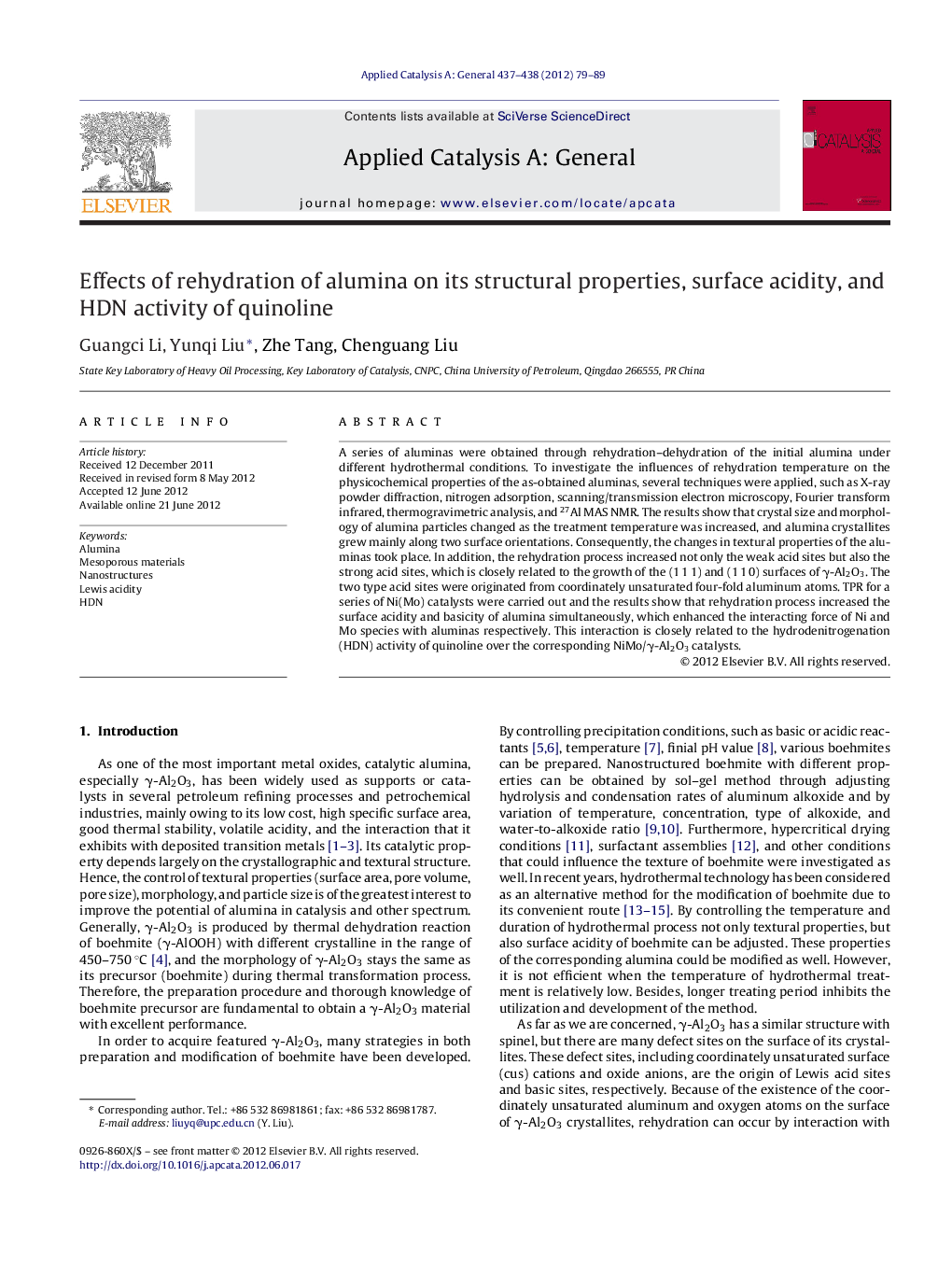| کد مقاله | کد نشریه | سال انتشار | مقاله انگلیسی | نسخه تمام متن |
|---|---|---|---|---|
| 40849 | 45868 | 2012 | 11 صفحه PDF | دانلود رایگان |

A series of aluminas were obtained through rehydration–dehydration of the initial alumina under different hydrothermal conditions. To investigate the influences of rehydration temperature on the physicochemical properties of the as-obtained aluminas, several techniques were applied, such as X-ray powder diffraction, nitrogen adsorption, scanning/transmission electron microscopy, Fourier transform infrared, thermogravimetric analysis, and 27Al MAS NMR. The results show that crystal size and morphology of alumina particles changed as the treatment temperature was increased, and alumina crystallites grew mainly along two surface orientations. Consequently, the changes in textural properties of the aluminas took place. In addition, the rehydration process increased not only the weak acid sites but also the strong acid sites, which is closely related to the growth of the (1 1 1) and (1 1 0) surfaces of γ-Al2O3. The two type acid sites were originated from coordinately unsaturated four-fold aluminum atoms. TPR for a series of Ni(Mo) catalysts were carried out and the results show that rehydration process increased the surface acidity and basicity of alumina simultaneously, which enhanced the interacting force of Ni and Mo species with aluminas respectively. This interaction is closely related to the hydrodenitrogenation (HDN) activity of quinoline over the corresponding NiMo/γ-Al2O3 catalysts.
Figure optionsDownload high-quality image (97 K)Download as PowerPoint slideHighlights
► γ-Al2O3 can transform completely into boehmite under hydrothermal condition.
► The physicochemical properties of initial γ-Al2O3 were changed remarkably.
► Pore structure and morphology are closely related to crystallite size of γ-Al2O3.
► The change in surface acidity depends on the proportion of γ-Al2O3 crystal planes.
► The hydrogenation activity of catalyst depends on the L acidity strength of alumina.
Journal: Applied Catalysis A: General - Volumes 437–438, 26 September 2012, Pages 79–89